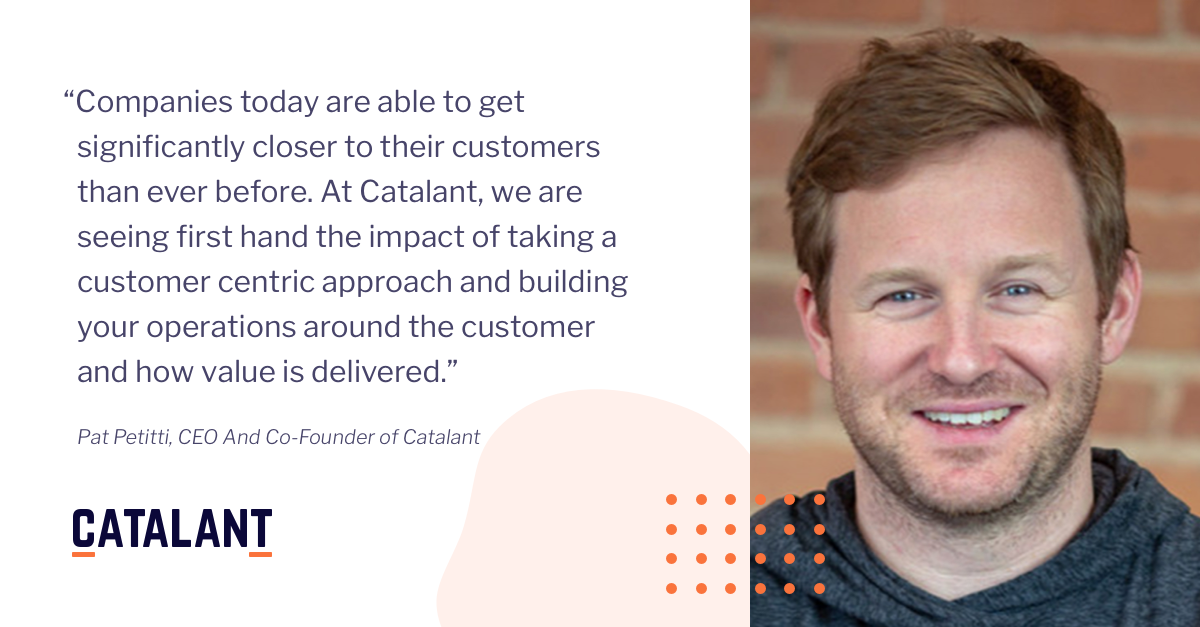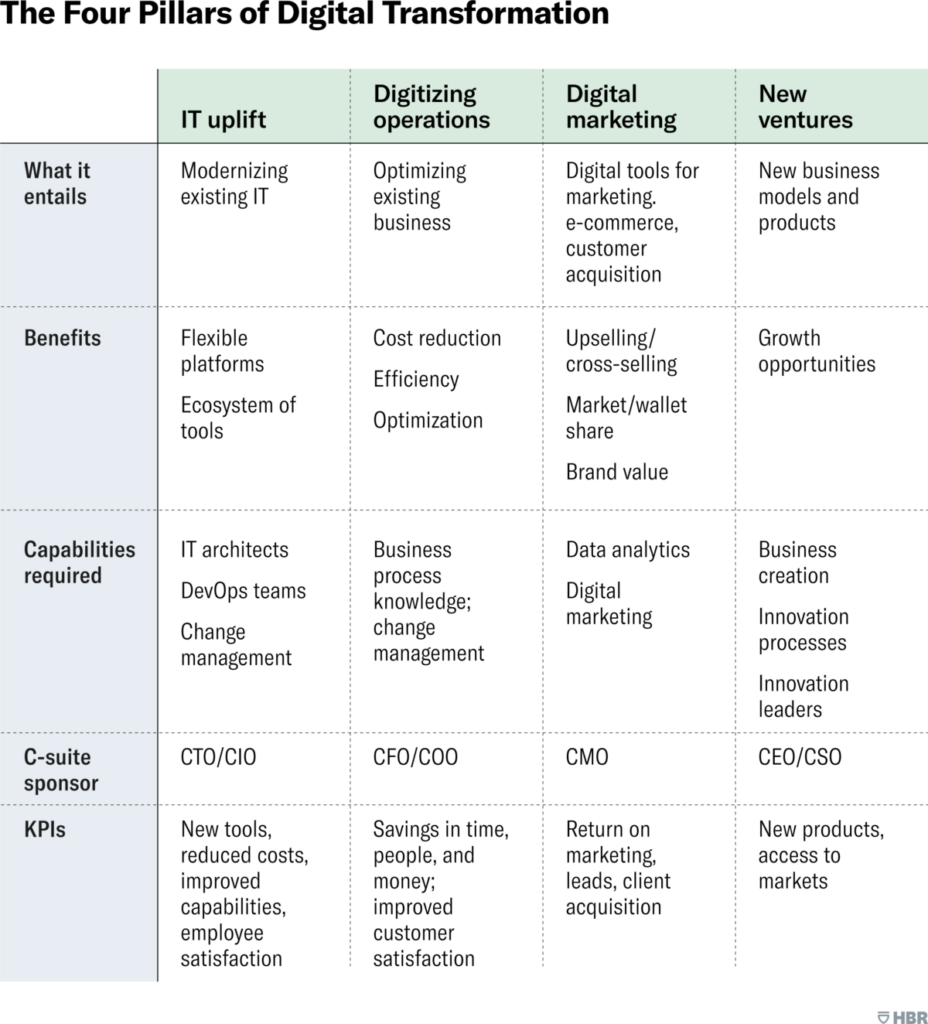A Modern Approach To Digital Transformation: Enterprises Must Act With Agility to Drive Progress

Executives find their global businesses at an impasse in their digital transformation efforts. Despite thoughtful, long-term planning, organizations found their progress unpredictably interrupted by a global pandemic. Executive focus was urgently turned to different areas of the business altogether to simply stay afloat. Or, digitization efforts that weren’t at the top of the list became a critical priority overnight – like establishing the IT infrastructure to move an entire workforce remote.
Fast forward to 2022 and leaders find themselves in a time of ‘new normal’. Flexible work policies are now standard, good talent is hard to come by or retain, and adapting to major change has become the norm rather than the outlier. Executives are looking at their initial plans for digital transformation and scratching their heads wondering how a plan developed in a time of long-term structure and stability could possibly work today.
The answer is that it won’t. Leaders must throw out their existing transformation plans and replace them with a more agile, sense-and-respond approach to fit today’s dynamic business environment.
The Harvard Business Review recently published a powerful guide to the four pillars of a successful digital transformation. They offer a simplifying framework to help business leaders prioritize their efforts through conflicting demands and changing priorities. The team writes:
The framework outlines the four pillars of digital transformation we see today: IT uplift, digitizing operations, digital marketing, and digital businesses. All four are part of most companies’ digital transformation journey. But without understanding how they are different, it’s confusing to understand what to do next or how to invest — the resources, tools, goals, C-Suite sponsors and KPIs required for success are totally different in each case. Being clear about their differing demands can help you make smart tradeoffs and clear progress.
Harvard Business Review
In this blog, the executive leadership team at Catalant explores each of HBR’s pillars more closely to identify how an agile approach leveraging independent strategic talent can make an impact.
Pillar One: IT Uplift – Modernizing Existing IT
Perspectives from Louis Asber, CTO at Catalant Technologies
“Technical leaders began navigating the opportunities and challenges of remote workforces long before Covid. What these leaders now face is an industry experiencing a paradigm shift in digital infrastructure and strategy transformation. Corporate strategies are rapidly shifting to adopt long-term hybrid workforces, to meet new demands and expectations from their workforce. IT solutions that worked temporarily in a global health emergency aren’t proving to be effective long-term.
IT leaders find themselves facing critical accessibility and scaling challenges in everything from video conferencing to home workstation setups, to secure network access, to physical laptop maintenance. Companies once content with local infrastructure are struggling to keep up with their competitors who are farther along in the transition to the cloud. Others are finding their infrastructure or toolsets cannot support large geographically dispersed workforces. Previous multi-year technical roadmaps are instantly deficient in supporting new operating models, and on-premises technology is insufficient to meet ever-growing distributed demands.
Catalant’s technology assessment and implementation services provide strategic partnerships to technology teams to tackle these challenges and accelerate critical projects while understanding their unique needs. Catalant’s experts can also help technology teams optimize their existing technology stack, improve operational efficiencies, and drive people and process improvements through digital strategy transformation.”
Pillar Two: Digitizing Operations – Optimize Existing Businesses
Perspectives from Pat Pettiti, CEO and Co-Founder at Catalant Technologies
“The past two years didn’t necessarily change the way we live, but they accelerated changes that were already occurring. Remote work, online shopping, digitization of everything we do was already underway – but it accelerated more quickly than anyone could have anticipated. What that means is 2020 and 2021 weren’t experiments; they drove changes that are here to stay.
For many companies that’s meant a fundamental shift in how they operate. Those that have and continue to succeed through this shift are the ones who see this as a real opportunity to improve and optimize their business operations. As an example, we have several enterprise clients that needed to move from a sales model largely reliant on channels to a direct-to-consumer model. Implementing this type of change in go-to-market strategy has major implications for underlying company operations. We partnered with companies time and time again as they looked for consultants with experience digitizing their supply chain.
This is, of course, critical; a direct-to-consumer model has major implications for how you procure, manufacture, and distribute and in fact, creates an opportunity to increase efficiency and productivity. And the impact hasn’t been limited to supply chain. Companies today are able to get significantly closer to their customers than ever before. At Catalant, we are seeing firsthand the impact of taking a customer-centric approach and building your operations around the customer and how value is delivered. Again, for many organizations this alone is new, and we consistently see companies bringing on expertise in getting closer to customers through the latest market research tools, surveys, and customer focus groups.”
Pillar Three: Digital Marketing – Digital Tools for Marketing, eCommerce, and Customer Acquisition
Perspectives from Vinda Souza, Former SVP of Marketing at Catalant Technologies
“It’s interesting how our collective understanding of digital marketing has evolved in the past several years – from display retargeting and paid advertising campaigns to essentially owning the attribution model from start to finish, incorporating both online and offline touchpoints holistically. That being said, I’m firmly of the belief that great marketing leaders will always prioritize brand health over short-term gains, and customer experience over conversion optimization. Not all decisions need to be data-driven; sometimes respect for human emotion should drive decisions, and common sense should remain in the front view.
We’re seeing a tremendous increase in the number of digital marketing projects posted to the Catalant platform and a growing desire for digital marketing planning and demand generation strategy ideation. It’s great to see companies turning to external digital marketing expert consultants because bringing in outside perspectives is so healthy for a marketing organization. Customer centricity is paramount not only because it’s best practice and respects the dignity of the people who trust us, but also because it’s a treasure map for doing the right things. At Catalant our rallying cry is “outside in,” and we prioritize listening to customers, engaging our key stakeholders, and learning from them in order to make smart, thoughtful decisions that benefit those we serve. Tunnel vision is really the death knell of creativity and situational awareness.
Turning to Catalant experts for digital marketing strategy can be a huge asset to companies looking to move quickly and iterate for competitive advantage without having to hire and onboard someone full-time to do foundational or supplemental work. Most importantly, that balanced “outside in” view is what keeps us all cognizant of our blind spots. Not only can companies get high-quality work done quickly by dedicated experts for whom digital marketing is absolute muscle memory, but they also benefit from the educational impact of knowing what’s out there, and how their brand is perceived by those not inundated by day-to-day operations.”
Pillar Four: New Ventures – New Business Models and Products
Perspectives from from Pat Pettiti, CEO and Co-Founder at Catalant Technologies
“The major reset that Covid-19 drove has moved virtually every company into a position of reassessing; reassessing who they are, the markets they’re in, the value they create, the customers they serve, the way they work. For many, that means new opportunities. Those opportunities could be both organic and inorganic, and in almost any case they require an increase in both capabilities – new skills to have the organization do new things – and capacity – more people to help with new workstreams and initiatives.
Corporate strategy is the function we most often partner with at Catalant, so we’ve had a front-row seat to these changes across global enterprises. We’ve seen significant investment in new market research, with an emphasis on entry points and competitive positioning, and follow-on investment in digital transformation and technology and program management, with an emphasis on functional or industry expertise related to the new market the organization, is entering.”
